Cuban artist creates massive installation to inaugurate Miami arts group’s new space
Most art exhibitions are passive. You walk in. Look around. Maybe read the text on the wall. Take some photos. Leave.
At Locust Projects, Miami’s longest-running alternative art space, a new installation challenges the viewing experience of a typical show and invites the community to leave its own mark on it.
Cuban-American artist Rafael Domenech created “assembling beneath a desire for sabotage,” a massive indoor pavilion that is meant to be just as much of a venue as it is a work of art. The architectural installation, which he likes to call a “pavilion publication,” doubles as a gathering space for recent and upcoming events — from a fancy dinner to a lamp-making workshop.
“The idea of this project is that you have a large space. How do you make it larger?” Domenech said.
It’s the first installation at Locust Projects’ newly opened Little River location, which used to be an old warehouse. For about two decades, the nonprofit was located in the Design District, where artists were free to do whatever they wanted in the space. Locust Projects adheres to a “culture of yes,” which means that the arts organization will help make an artist’s wildest dreams come true, from installing indoor pools with synchronized swimmers to creating a hanging garden inside its space.
But that old location was too small. The group moved into the Little River neighborhood, which has been emerging as a new arts hub in South Florida. (Oolite Arts, another local arts nonprofit, is building its new headquarters in Little River as well.)
Locust Projects and Domenech had been discussing doing a project together for some time, said Lorie Mertes, the executive director. Domenech, who could easily work with such a large space, was perfect for the new location’s inaugural show, Mertes said. She trusted his vision, and he completed the structure in just over a month. The work is on view until June 24.
“I knew I could trust this moment of chaos at Locust to Rafa,” she said.
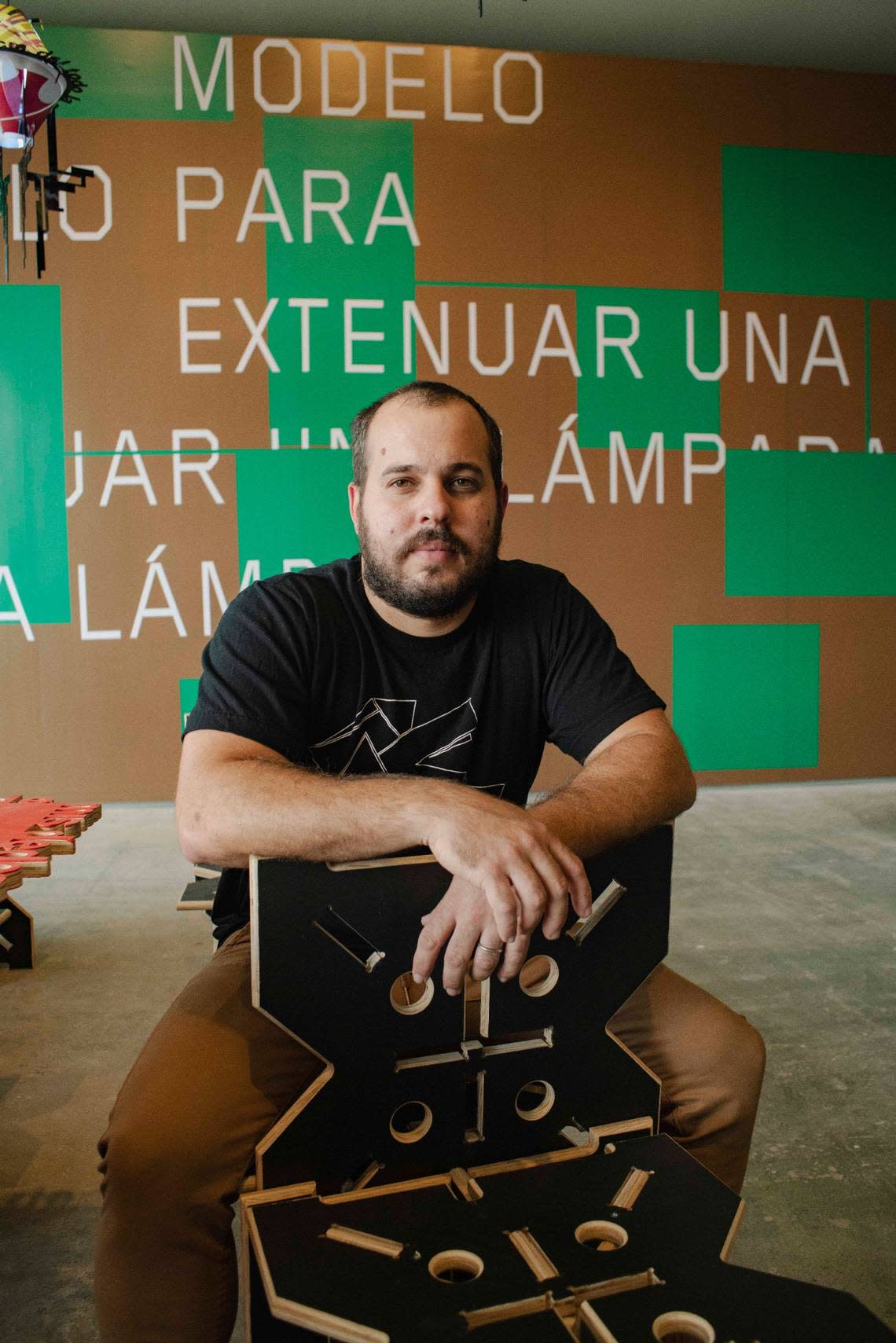
Domenech is an accomplished interdisciplinary artist and educator who focuses on public gathering spaces, architecture, graphic design and publishing. Born and raised in Havana, Cuba, he grew skeptical of hierarchical structures and critical of the government. He left the island in 2010 at age 21 to be with his mother in West Palm Beach and later moved to Miami where he attended New World School of the Arts.
He also earned a bachelor’s degree from the Academia Nacional de Bellas Artes San Alejandro in Cuba, a master’s degree from Columbia University and has been featured in The Bass Museum in Miami Beach, the Bronx Museum of the Arts and the Frost Art Museum in Miami. Recently, he exhibited at the 58th Carnegie International at the Carnegie Museum of Art in Pittsburgh, where he showed a similar pavilion.
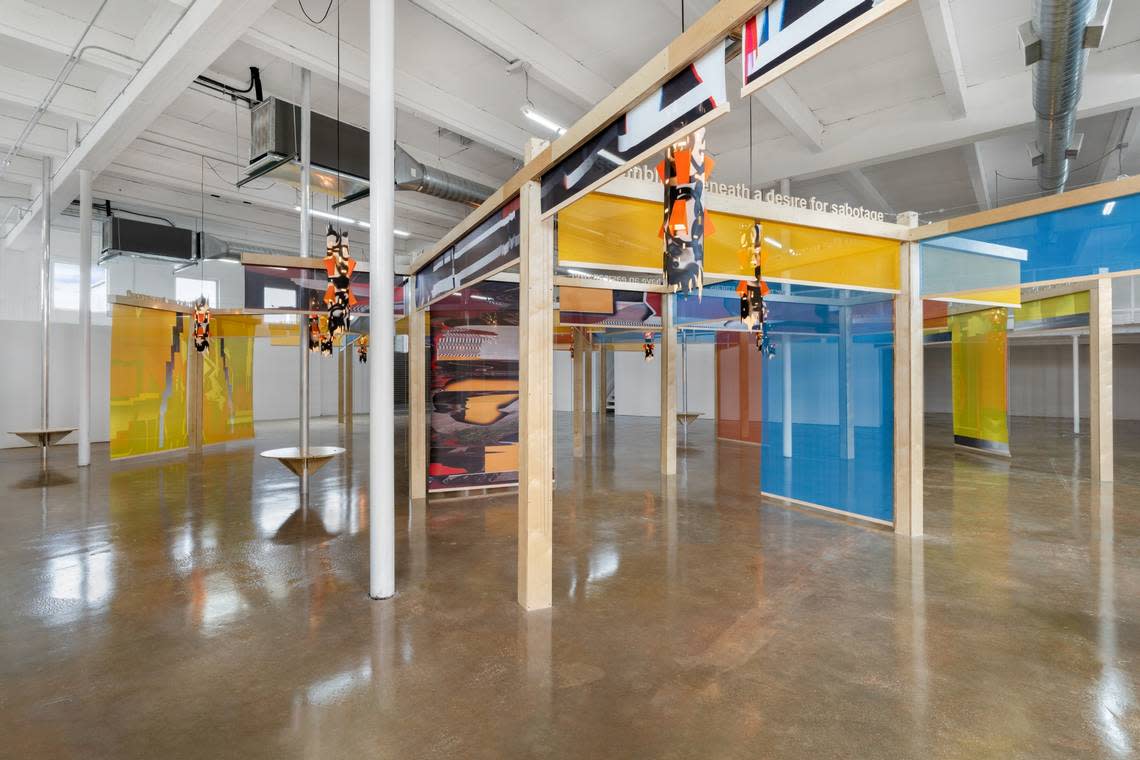
Domenech’s latest installation proves that Locust Project’s “yes” mission is very much alive. The structure takes up almost the entirety of the 8,000-square-foot building’s floor space.
The indoor pavilion at Locust Project is like a maze of tall wooden frames holding up colorful sheets of fabric that retract like window blinds. The designs on the fabric are heavily distorted photos of Miami Domenech took over several years. He deconstructed and reconstructed a scanner that moved the images while it was scanning. In some of the designs, you can make out a house, a jewelry store, a window. But most look like blocks of color and static. They’re technically photos of Miami, but the city is unrecognizable.
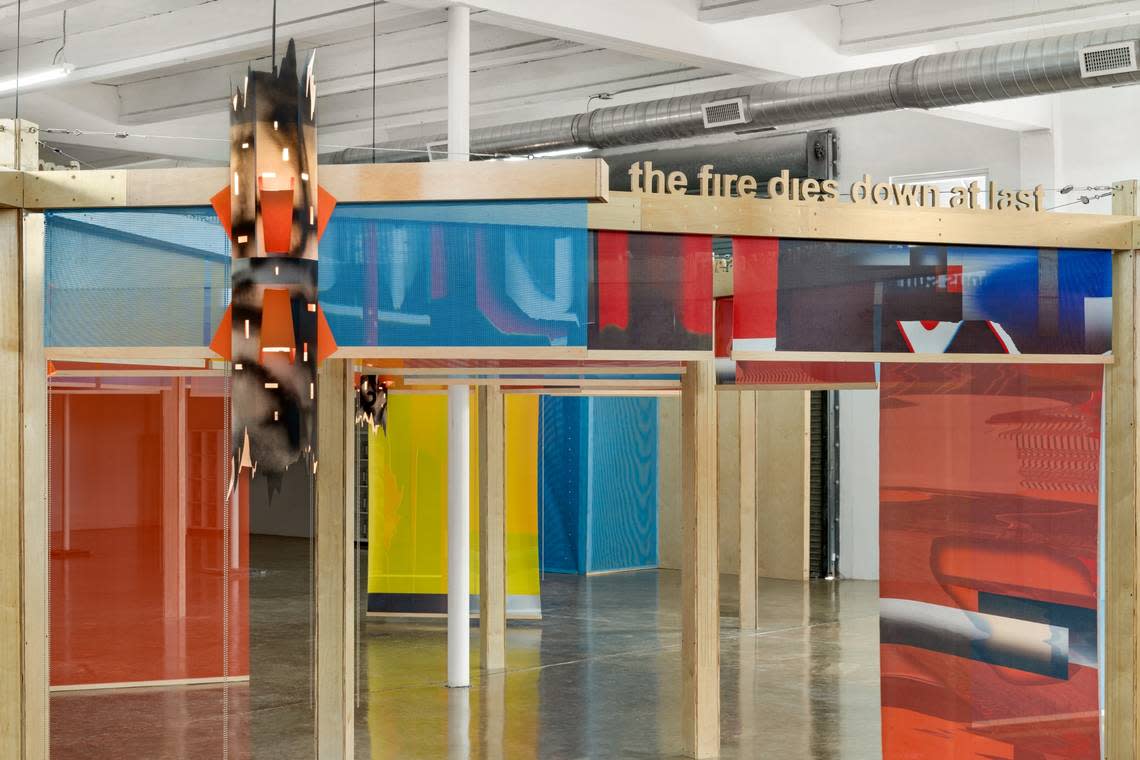
The structure’s pathways don’t lead to a central point. There’s no clear entrance or exit. Instead, visitors are free to walk through or around the pavilion. Hierarchies — and the strict rules that come with them — are inherently problematic, he said.
“I don’t like centers. I think that edges and peripheries are interesting spaces,” Domenech said while walking around the installation. “So it’s a structure that doesn’t acknowledge a center.”
As an artist and an educator, Domenech said he wants to provide the tools for people to come to their own conclusions and participate in the environment in their own way.
“That’s why places like Locust are pivotal for that, right?” Domenech said. “They operate at the edge of those regulations, that museums [have], and you could move freely. The viewer can experiment a bit more on those capacities of what a work can be and what a work can do.”
The exhibition is punctuated with a series of “chapters,” or moments in the installation’s time at Locust. Before the structure was completed, it hosted a talk with Domenech and Talia Heiman, who served on the curatorial team for the Carnegie International, on Feb. 18. A few days later, people were invited to a workshop to make the spray-painted lamps that are now on display in the pavilion.
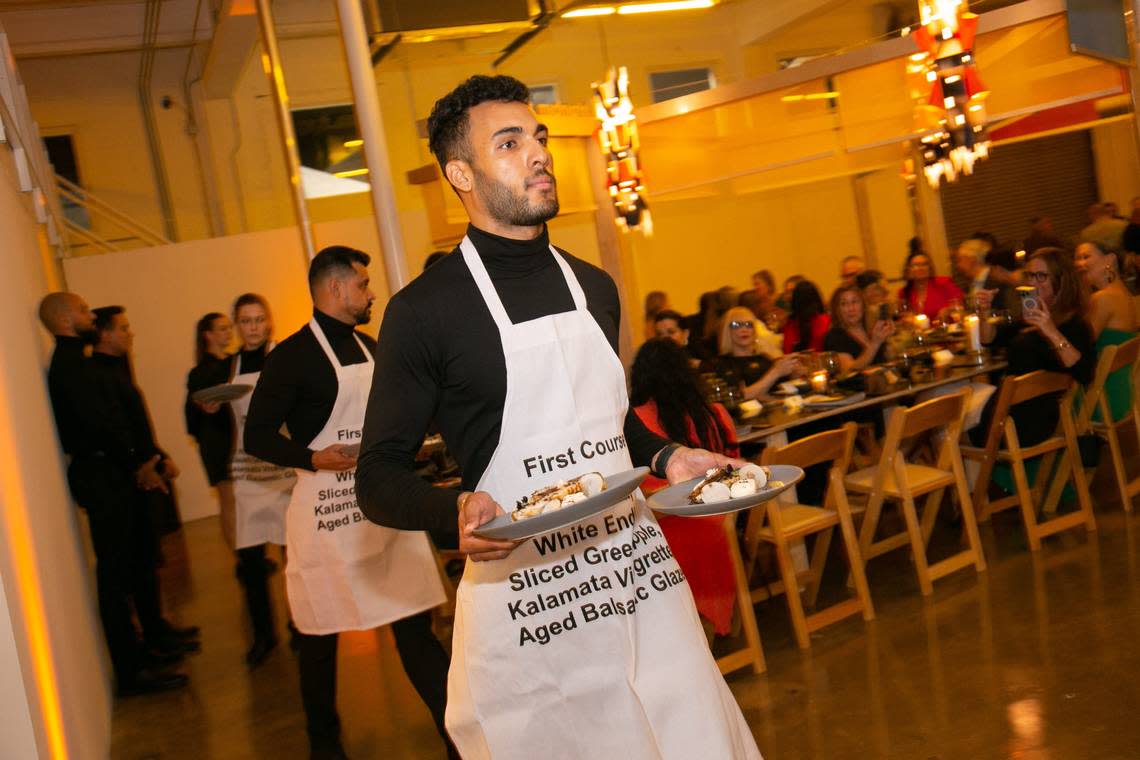
During these events, Domenech provides some loose guidelines and instructions, but it’s really up to the participants to make the most of it. For example, for Locust Projects’ 25th anniversary dinner, he designed an interactive dining experience that was held within the pavilion. His “rules” for the dinner menu were for all the food to be black and white and for guests to wear monochromatic outfits. (His only other request was for a black flan, which was delicious, he said.)
“You give people a parameter and within that is freedom,” Domenech said.
Domenech and Locust have more activations planned for the rest of the show’s time at Locust. At the “end,” a group of teenage artists from the nonprofit’s Locust Art Builders program will deconstruct the structure and use the materials to make their own art show, Mertes said. And people who made the lamps are invited to get their creations back to bring home with them.
In a way, Domenech said, the show doesn’t really end. It lives on.
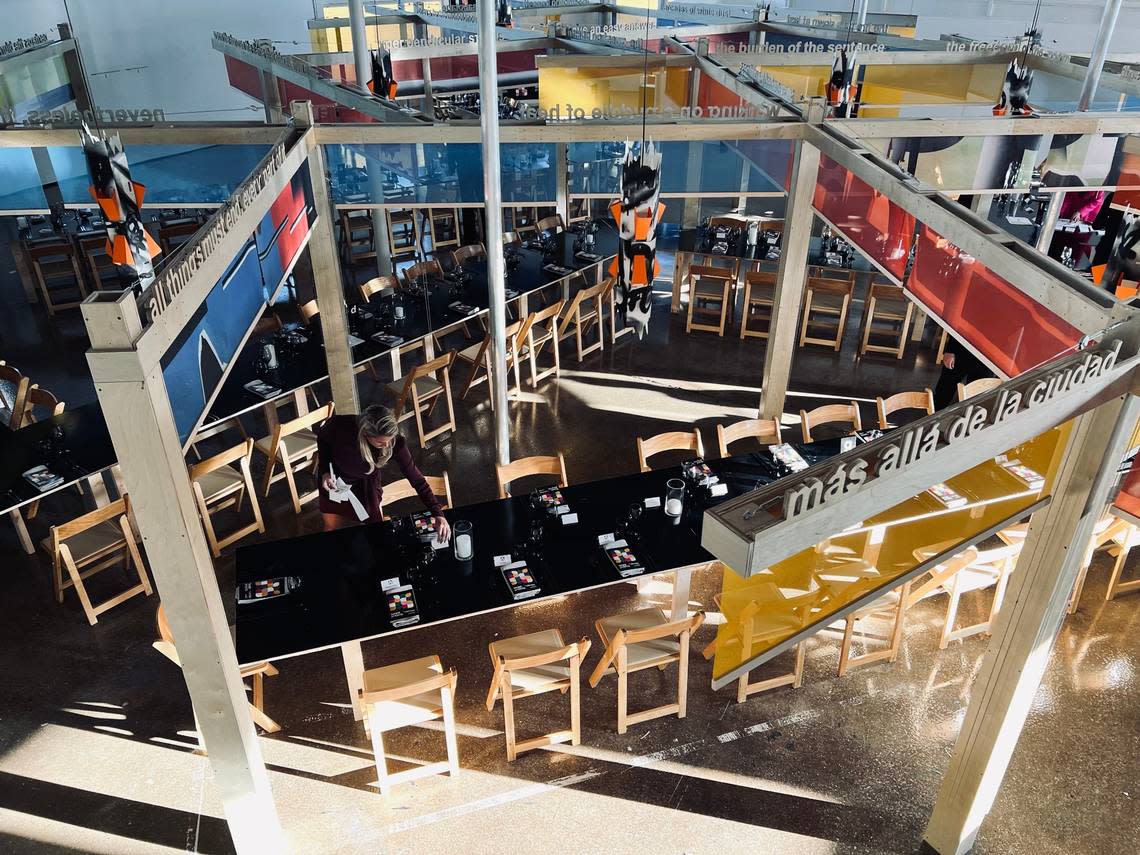
‘assembling beneath a desire for sabotage’ by Rafael Domenech
Where: Locust Projects, 297 NE 67th St., Miami
When: On view until June 24.
Hours: Wednesday through Saturday, 11 a.m. to 5 p.m.
Info: Free and open to the public. https://locustprojects.org/exhibitions/main-gallery/assembling-beneath-a-desire-for-sabotage.html
This story was produced with financial support from The Pérez Family Foundation, in partnership with Journalism Funding Partners, as part of an independent journalism fellowship program. The Miami Herald maintains full editorial control of this work.
